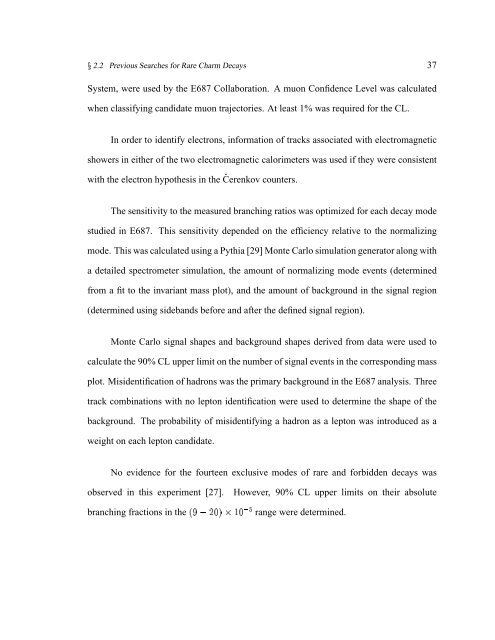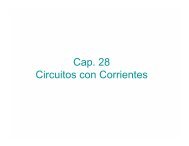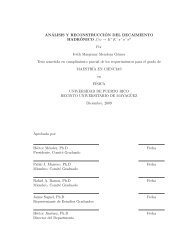A Search for Rare Decay D0 --> mu+mu - High Energy Physics UPRM
A Search for Rare Decay D0 --> mu+mu - High Energy Physics UPRM
A Search for Rare Decay D0 --> mu+mu - High Energy Physics UPRM
You also want an ePaper? Increase the reach of your titles
YUMPU automatically turns print PDFs into web optimized ePapers that Google loves.
anching fractions in the U¬W‘i2.2 Previous <strong>Search</strong>es <strong>for</strong> <strong>Rare</strong> Charm <strong>Decay</strong>s 37System, were used by the E687 Collaboration. A muon Confidence Level was calculatedwhen classifying candidate muon trajectories. At least 1% was required <strong>for</strong> the CL.In order to identify electrons, in<strong>for</strong>mation of tracks associated with electromagneticshowers in either of the two electromagnetic calorimeters was used if they were consistentwith the electron hypothesis in the Čerenkov counters.The sensitivity to the measured branching ratios was optimized <strong>for</strong> each decay modestudied in E687. This sensitivity depended on the efficiency relative to the normalizingmode. This was calculated using a Pythia [29] Monte Carlo simulation generator along witha detailed spectrometer simulation, the amount of normalizing mode events (determinedfrom a fit to the invariant mass plot), and the amount of background in the signal region(determined using sidebands be<strong>for</strong>e and after the defined signal region).Monte Carlo signal shapes and background shapes derived from data were used tocalculate the 90% CL upper limit on the number of signal events in the corresponding massplot. Misidentification of hadrons was the primary background in the E687 analysis. Threetrack combinations with no lepton identification were used to determine the shape of thebackground. The probability of misidentifying a hadron as a lepton was introduced as aweight on each lepton candidate.No evidence <strong>for</strong> the fourteen exclusive modes of rare and <strong>for</strong>bidden decays wasobserved in this experiment [27].However, 90% CL upper limits on their absolutez¥{ŽgŽ~ range were determined.¥ {






